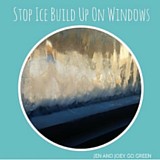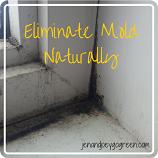Well it is that time of year again. The time when the beauty of falls vanishes and we are left with months of freezing rain and snow. Here are some tips to get your house ready for the winter season. It will help to keep you warm and reduce your energy costs.
Replace the filters on your heating system. Dirty filters will block the flow of air and make your system less efficient.
Set your programmable thermostat to comfortable temperatures while you are at work, at home and sleeping. We have ours set for 75 degrees while we are home, 72 while we sleep and 70 while we are at work.
Check your windows. Make sure that there is not a draft. If there is try re-caulking them or purchase a kit to winterize your windows. It will take only a few minutes to do each window and can make a big difference in how much warm air you are losing.
Check your exterior doors. If you feel a draft then consider replacing the weather stripping.
Check your vents. Make sure they are not blocked. This will allow the warm air to flow freely throughout your house. If you don't need/want to heat a particular area of your house then shut the vent entirely.
If you have a fireplace make sure the flue/vent is clear before you use it.
If you have any other tips please suggest them!
Replace the filters on your heating system. Dirty filters will block the flow of air and make your system less efficient.
Set your programmable thermostat to comfortable temperatures while you are at work, at home and sleeping. We have ours set for 75 degrees while we are home, 72 while we sleep and 70 while we are at work.
Check your windows. Make sure that there is not a draft. If there is try re-caulking them or purchase a kit to winterize your windows. It will take only a few minutes to do each window and can make a big difference in how much warm air you are losing.
Check your exterior doors. If you feel a draft then consider replacing the weather stripping.
Check your vents. Make sure they are not blocked. This will allow the warm air to flow freely throughout your house. If you don't need/want to heat a particular area of your house then shut the vent entirely.
If you have a fireplace make sure the flue/vent is clear before you use it.
If you have any other tips please suggest them!







How To Reduce Your Energy Bills / Energy Conservation Begins at Home
ReplyDeleteImagine leaving a window open all winter long -- the heat loss, cold drafts and wasted energy! If your home has a folding attic stair, a whole house fan or AC Return, a fireplace or a clothes dryer, that may be just what is occurring in your home every day.
These often overlooked sources of heat loss and air leakage can cause heat to pour out and the cold outside air to rush in -- costing you higher heating bills.
Air leaks are the largest source of heating and cooling loss in the home. Air leaks occur through the small cracks around doors, windows, pipes, etc. Most homeowners are well aware of the benefits caulk and weatherstripping provide to minimize heat loss and cold drafts.
But what can you do about the four largest “holes” in your home -- the folding attic stair, the whole house fan or AC return, the fireplace, and the clothes dryer? Here are some tips and techniques that can easily, quickly and inexpensively seal and insulate these holes.
Attic Stairs
An easy, low-cost solution to this problem is to add an attic stair cover. An attic stair cover provides an air seal, reducing the air leaks. Add the desired amount of insulation over the cover to restore the insulation removed from the ceiling.
Whole House Fans and AC Returns
An easy, low-cost solution to this problem is to add a whole house fan cover. Installed from the attic side, the whole house fan cover is invisible. Cover the fan to reduce heating and air-conditioning loss, remove it when use of the fan is desired.
Fireplaces
A recent study showed that for many consumers, their heating bills may be more than $500 higher per winter due to the air leakage and wasted energy caused by fireplaces.
An easy, low-cost solution to this problem is to add a fireplace draftstopper. Available from Battic Door, a company known for their energy conservation products, a fireplace draftstopper is an inflatable pillow that seals the damper, eliminating any air leaks. The pillow is removed whenever the fireplace is used, then reinserted after.
Clothes Dryer Exhaust Ducts
An easy, low-cost solution to this problem is to add a dryer vent seal. This will reduce unwanted air infiltration, and keep out pests, bees and rodents as well. The vent will remain closed unless the dryer is in use. When the dryer is in use, a floating shuttle rises to allow warm air, lint and moisture to escape.
If your home has a folding attic stair, a whole house fan, an AC return, a fireplace, and/or a clothes dryer, you can easily, quickly and inexpensively seal and insulate these holes.
Mark D. Tyrol is a Professional Engineer specializing in cause and origin of construction defects. He developed several residential energy conservation products including an attic stair cover, an attic access door, and is the U.S. distributor of the fireplace draftstopper. To learn more visit www.batticdoor.com